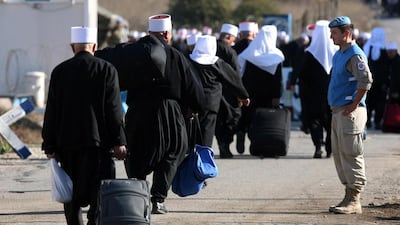A relative who was almost 90 passed away recently, and despite efforts to find out more, he stubbornly took his “secret” with him.
Well, it wasn’t much of a secret that he was a Freemason, as he always wore his Masonic ring and several details from his life indicated he was part of this special fraternity.
But I still say “secret” because Freemasonry began in medieval Europe as a guild for stonemasons and acquired a reputation for secrecy.
This relative is believed to have joined the Freemasons via his work at the Iraq Petroleum Company, known before 1929 as the Turkish Petroleum Company. He used to travel and set up businesses in places like Liberia, the US and elsewhere. But he seemed to always have “help” whenever he went.
When asked how one joined and other details about the fraternity, he would say no more than that they are “like brothers” and not all Freemasons are very famous and very rich.
In the late 1800s and early 1900s, Freemasonry was quite popular in the Middle East, with many important figures such as Lebanon’s first president Charles Debbas, Lebanese poet Khalil Gibran and the late King Hussein of Jordan rumoured to be part of the organisation.
There is no room to discuss its complete history but according to several sources, Scots established the first lodge in the Middle East. It was in Aden in 1850. The first Masonic Lodge in Lebanon was chartered by the Grand Lodge of Scotland in 1861 and given the name Palestine Lodge No. 415. A lodge in Palestine followed in 1873. The movement went through different phases of activity and inactivity. Today of course one can google the Freemasons and even buy Masonic rings online, but I doubt they are authentic. The public likes to analyse and look for hidden symbols, what they mean and where they originated.
We all have a certain fascination with “secret” societies, cults and groups such as the Freemasons and the Illuminati, which originated from the Bavarian Illuminati, an Enlightenment-era secret society founded on May 1, 1776. Someone will regularly raise the issue of the all-seeing eye floating over an unfinished pyramid, said to be the “Illuminati logo” as printed on an American dollar bill and people will sit for hours analysing it.
We always want to know more and if we don’t, we are intrigued. Many readers for instance were fascinated by my story this week, on one of the oldest Druze dynasties. As the group keeps to itself, the world is intrigued by them and wants to know about this religion that traces its origins to 11th-century Egypt. There are books and research papers dedicated to the many lesser known groups, but as one researcher once told me: “If the information is out there, it means these groups actually wanted this information out for whatever reason.”
Perhaps one of the strangest groups I came across were the “devil worshippers”. Just a few years ago, a group of youths were jailed in Lebanon for being members of a Satanic group.
Just how seriously this was taken is reflected in the way the teachers in my school in Jeddah in the 1990s, would show us videos that couldn’t possibly have been true, of those “lost souls”, masked, meeting underground, killing animals and children as a sacrifice to the devil. I recall the video being very bad as if it had been taped in secret. The public always searches for meaning in events and sometimes, some get tied to secret groups. But given their nature, one will never know what is fact and what is fiction. It all remains a mystery, part of the allure of the unknown.
rghazal@thenational.ae
On Twitter:@arabianmau

